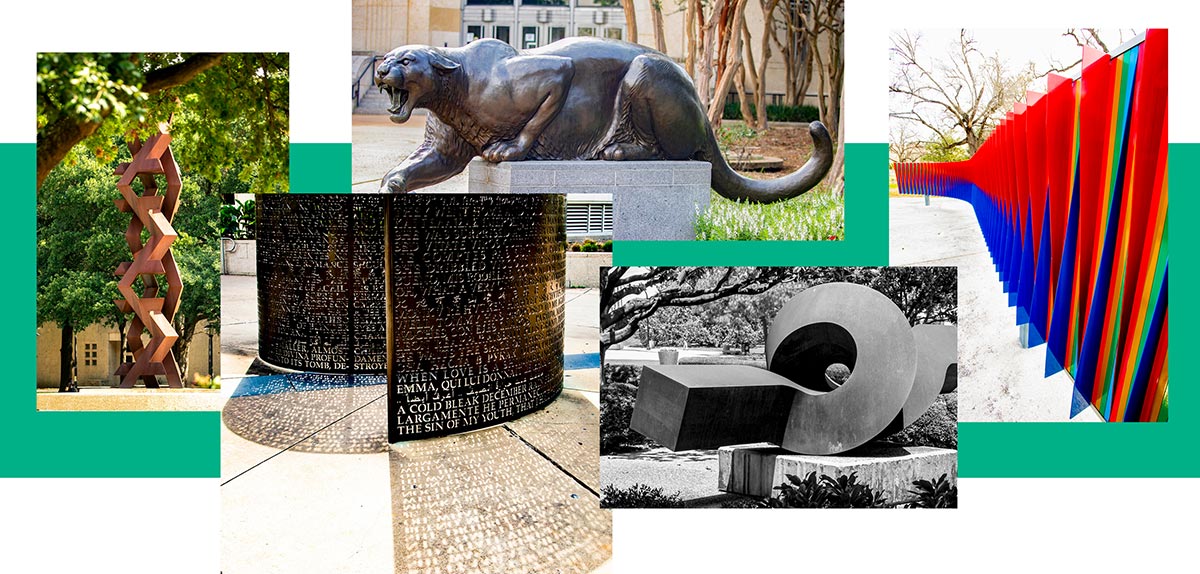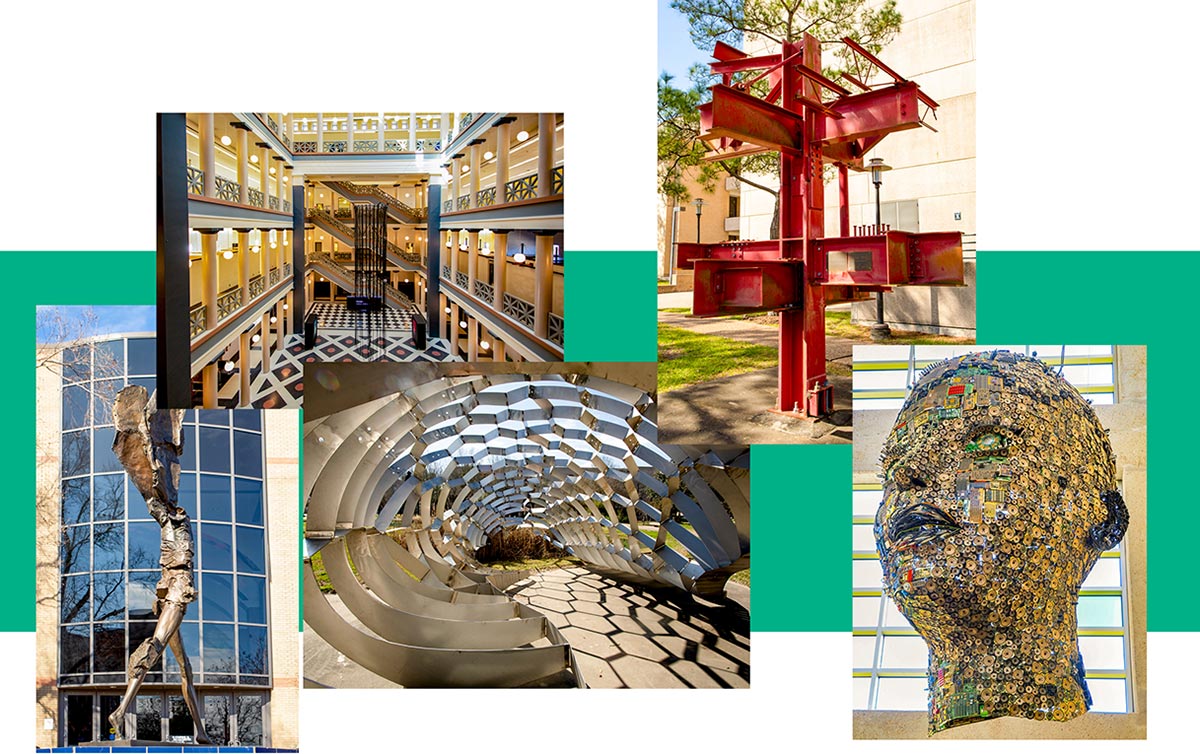By John Lienhard
Today, technology, engineering, and art. The University of Houston presents this series about the machines that make our civilization run, and the people whose ingenuity created them.
I love to stroll through our Houston campus. Everywhere we look we see startling pieces of art. It is an outdoor/indoor museum. But let us be aware of the technology and engineering behind it all.
Here, in the campus center a jumble of structural steel bars forms a tall tower. But a pattern emerges as we circle it. It’s actually made of three identical slabs, nested together. It uses a strangely logical structure to subtly engage our senses.
|
|
The early Greeks summed that up in a word: Techne! And that meant skill in doing — whether playing an instrument, building a structure, painting a picture, or doing mathematics. Aristotle added that a person who practices techne must be able to explain what he does. Which gives us our word technology.
Technology is the lore, or the science, of techne. And that’s what this campus is all about. The STEM subjects fused with the Liberal Arts.
So here’s more art: a huge iron cylinder punctured with writings in all different languages. Sunlight dapples through it, scattering the words on the sidewalk.
So we pass fountains, bronze cougars, abstract forms — all made in ways too surprising to imagine. Like a gigantic square beam with a circular twist in the middle. Or a strange sinuous fence made of colorful slats. That sounds simple enough, until it shifts in color and form as we walk around it.
|
|
Many campuses (far from all) display public art. But we have a special mandate: Each time we erect a building, one percent of its construction cost must fund a piece of public art — another half percent for large renovations. And that attracts private contributions, like our Music School’s Winged Victory sculpture.
Or let’s go indoors: The inside of our Architecture building is cathedral-like, with a square oculus on the roof far above. Out-side, that oculus on top is surrounded by a wildly out-of-place Parthenon. Back on our walk, we pass art built by our students: Here is a huge open-mesh aluminum piece resembling a beetle’s carapace — its parts formed with stunning precision. Over there is our engineering students’ red assembly of beams and gusset plates.
We come at last to our Radio/TV station. Its art object is indoors. A huge human head hangs from the ceiling of the entry hall. Look closely. It’s made entirely out of electronic parts and pieces of audio equipment.
Weird? Maybe. But it’s one more item that we cannot ignore. Everywhere we look, we see a fusion of art, engineering, and technology. We see a swirling reminder of what education is all about. The message is subtle, but it’s inescapable. The Arts are the binding tissue of all that we make or do.
I’m John Lienhard, at the University of Houston, where we’re interested in the way inventive minds work.
The Engines of our Ingenuity is brought to you by the Friends of Houston Public Media.


